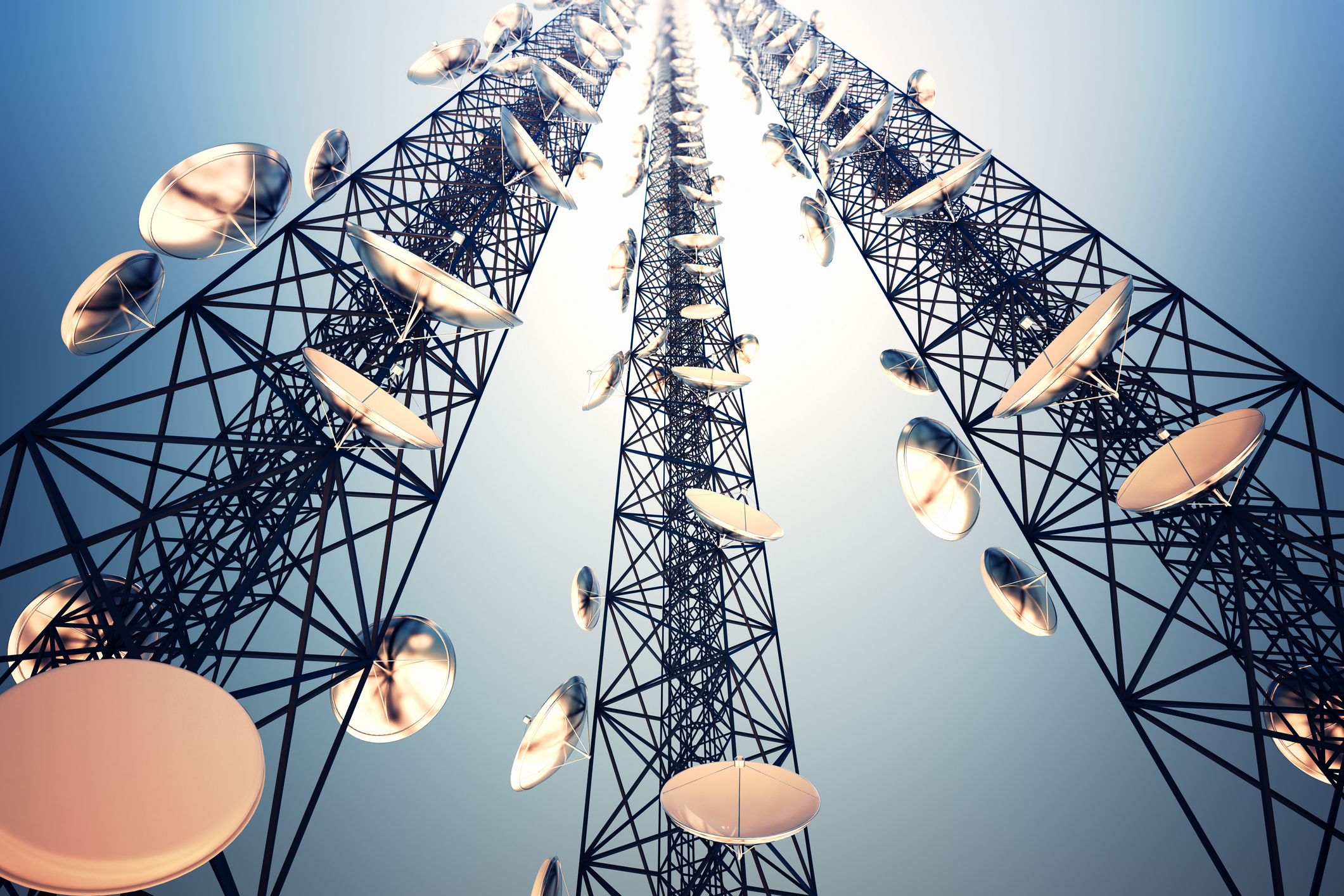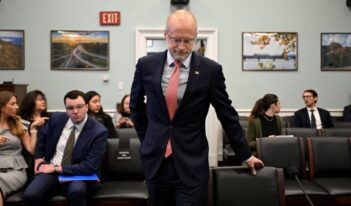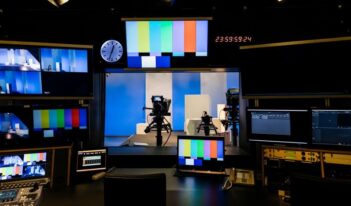
FCC launches complex process to reallocate airwaves for broadcasters and wireless companies.
Some television viewers might soon lose their local television programming in favor of freeing up the airwaves for mobile networks. The Federal Communications Commission (FCC) kicked off its long-awaited “broadcast incentive auction” earlier this spring. For a period of several months, broadcasters will be paid to relinquish their spectrum so that mobile carriers and other wireless companies can bid for additional spectrum—radio waves used for wireless communications such as television broadcasting, radio programing, GPS, and mobile phones.
The FCC regulates who can use which slivers of the radio spectrum by allocating licenses to companies for specific frequencies. The FCC hopes that its current incentive auction will be a boon to consumers who increasingly receive media content through their smartphones.
Wireless companies—mobile phone companies, in particular—have a voracious appetite for more spectrum because of the demand for cellular data. However, TV broadcasters hold the ideal spectrum for cellular communications. These frequencies are ideal for transmitting in urban areas and could be the foundation for the rollout of 5G—a generational leap from the 4G LTE that powers today’s smartphones.
In other words, TV broadcasters are sitting on prime real estate that very few consumers use anymore. Only seven percent of households rely on TV broadcasting through the airwaves. Instead, almost all of today’s consumers receive their television programing from cable or satellite, neither of which use valuable space on the radio spectrum. But wireless companies must convince broadcasters to give up their valuable but under-used spectrum.
To address this problem, Congress in 2012 created a framework for an incentive auction to be overseen by the FCC. Spectrum auctions are nothing new for the FCC: the agency uses auctions any time it wants to allocate new blocks of spectrum. The current incentive auction is different, though, because for the first time, the FCC will use an auction to encourage companies to relinquish spectrum and then allocate it to different users.
The FCC’s convoluted incentive auction process—its bidding procedures alone span over 150 pages—consists of three phases.
The first phase is called the “reverse auction.” TV broadcasters will auction their spectrum licenses to the government. The FCC will provide an opening price as high as $900 million and then give broadcasters three options: go off the air, move to another channel frequency, or relinquish their current channel to share a channel with another broadcaster. The price to relinquish a spectrum license will then decrease until a deal can be reached between the broadcaster and the government.
The FCC’s goal is to acquire as much spectrum as possible for the lowest possible price from the more than 1,800 eligible TV broadcasters. Local affiliates of the large networks like Fox or CBS will stay on the air—so if nothing else, viewers will still be able to watch their favorite football teams on Sunday. Instead, the FCC expects participation in the auction to come from independent TV stations. For example, Howard University indicated that it would sell some of its spectrum currently used for a local TV channel.
Once the FCC acquires its targeted amount of spectrum, it will then sell that spectrum to wireless companies in the second stage, called the “forward auction.” The forward auction works like a standard auction, with the FCC selling spectrum licenses to the highest bidder. Most of the major mobile companies are expected to bid. Analysts project that AT&T, Verizon, and T-Mobile will spend around $10 billion each.
Some spectrum will be off limits to the big players to encourage competition. The proceeds from the forward auction will then be used to pay the broadcasters in the reverse auction. These first two stages should be completed by the end of this summer.
The final stage of the process is called “repacking.” After the auctions finish, the FCC will rearrange and consolidate television station channels so that they occupy a smaller portion of spectrum in order to free up space for mobile companies. This process will take thirty-nine months, a period which some broadcasters are concerned will not be long enough. For consumers, this means that people who receive their TV through an antenna will need to learn new channel numbers for their favorite programming once repacking is complete.
The entire process could fail if one stage fails, since the reverse and forward auctions are dependent upon one another. Broadcaster participation is crucial for the FCC to obtain the necessary amount of spectrum, and many broadcasters might drop out if the prices in the reverse auction fall too low. So far, broadcaster participation is strong enough for the FCC to meet its target amount of spectrum. Broadcasters must then accept the government’s bids for their spectrum.
Likewise, if the mobile companies do not bid high enough in the forward auction, then there will not be enough money to pay the broadcasters. The major mobile companies spent heavily in the last major auction in 2014, meaning that they have less capital to spend this time. FCC Chairman Tom Wheeler, however, is confident that the spectrum auction will be a success; indeed, he has predicted an “extravaganza.”
If the auction is successful, the role of the community broadcaster will decrease in favor of enabling mobile companies to meet consumer expectations for more online content streamed to their smartphones and tablets.



